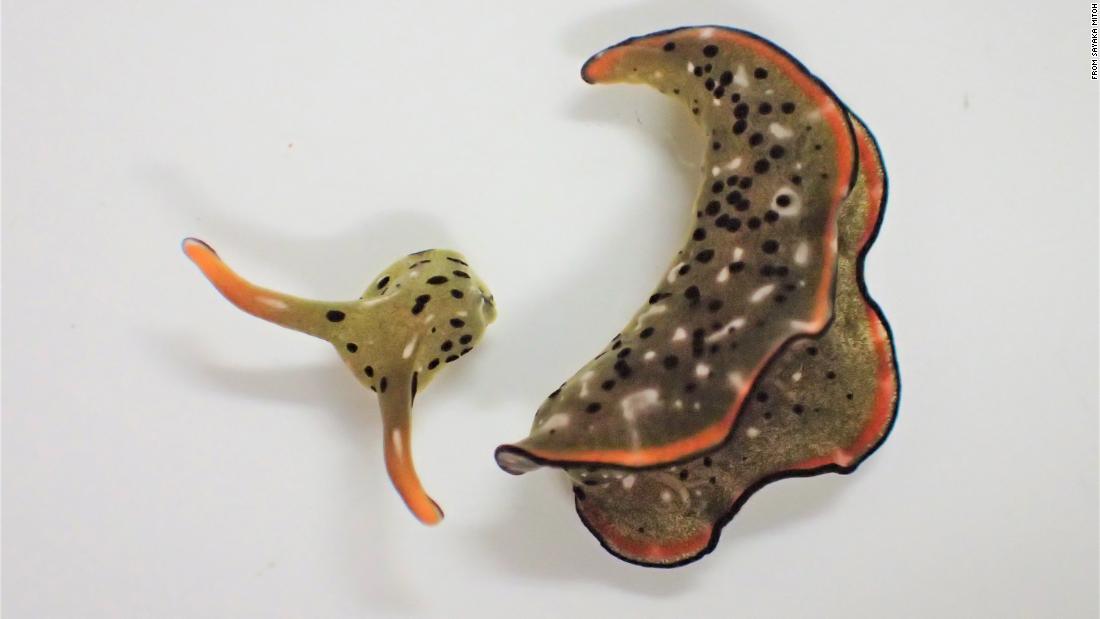
Some animals like these sacoglossan slugs, also known as sap-sucking sea snails, can autotomize, which is when an animal voluntarily sheds a body part, said study author Sayaka Mitoh, a doctoral student in the department of biological sciences at Nara Women’s University in Japan. .
She said the research team couldn’t determine why the snails shed vital body parts, but some animals do it to get rid of internal parasites that inhibit their reproduction, Mitoh said.
Five of the 15 lab-bred young Elysia cf. marginata slugs began decapitating themselves about 226 to 336 days after hatching. They started feeding on algae within hours of losing their body parts and started regenerating their hearts within seven days. After 20 days, the snails had regenerated their entire body.
Three of the 82 Elysia atroviridis slugs decapitate their bodies by the neck. Two of those snails regenerated their bodies within a week.
Not all snails were so lucky.
Older slugs – the Elysia cf. marginata slugs that hatched 480 to 520 days prior to self-decapitation – did not feed and died within 10 days.
It may seem like a “foolish” choice for the older slugs to separate their head from the body if they don’t survive, Mitoh said, but the “old snails will die quickly anyway and there may be a chance to survive and breathe new life into a parasite-free body. “
Mitoh isn’t sure how the slugs can live without some of their vital organs, “but they can live without a heart, probably because their heads are small,” and can take in oxygen through the surface of their bodies.
One of the snails in the experiment was able to complete the regeneration process twice, but Mitoh said she’s also unsure how the snail could do it.
The study’s findings were intriguing, said Ángel Valdés, professor and department chair of biological sciences at California State Polytechnic University, Pomona, who was not involved in the study.
“Other sacoglossan sea snails can regenerate appendages or other parts of the body, but this is an extreme case,” said Valdés.
The sea snails he has studied in the past also autotomize parts of their bodies, but rarely vital organs.
More needs to be learned about this phenomenon, both about the species in the experiment and other animals, Mitoh said.
“We want to investigate whether other types of sacoglossans have this ability to study the evolutionary pattern and process of such extreme autotomy and regeneration,” she said.
In addition to evolution, Valdés is also interested in going into the field to see if he can repeat the results of the experiment.
“I am also curious about the molecular and physiological mechanisms underlying the body’s regeneration,” said Valdés.

